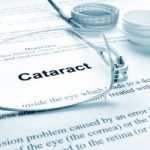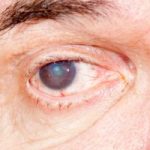 This roundup of our recent articles discusses cataracts and their association with Alzheimer’s disease, type 2 diabetes, epilepsy, blurred vision, and sunlight. For most people, cataracts develop slowly and don’t disrupt the vision early on. But with time and age, this will interfere with your daily life and you’ll need eyeglasses. You may need surgery down the road, generally, a safe and effective procedure. But still…the question is how to slow down cataracts? Are there any natural remedies for cataracts? Is there a natural way to cure cataract even?
This roundup of our recent articles discusses cataracts and their association with Alzheimer’s disease, type 2 diabetes, epilepsy, blurred vision, and sunlight. For most people, cataracts develop slowly and don’t disrupt the vision early on. But with time and age, this will interfere with your daily life and you’ll need eyeglasses. You may need surgery down the road, generally, a safe and effective procedure. But still…the question is how to slow down cataracts? Are there any natural remedies for cataracts? Is there a natural way to cure cataract even?
If you’re asking these questions, you’re not alone. According to the U.S. Centers for Disease Control and Prevention (CDC), an estimated 20.5 million (17.2 percent) Americans aged 40 years and older have cataract in one or both eyes, and 6.1 million (5.1 percent) have had their lens removed operatively. The total number of people who have cataracts is estimated to increase to 30.1 million by 2020.
Cataracts and Alzheimer’s disease linked to common gene: Study
Advertisement
Cataracts and Alzheimer’s disease have been found to be linked to a common gene. Both conditions arise with age, but the latest findings now add further evidence to a genetic link, too.
The researchers looked at the brain MRIs of the participants in the Framingham Offspring Eye Study cohort. The researchers found a strong correlation between cortical cataract and Alzheimer’s disease-related brain degeneration. Particularly impacted was the volume of the temporal horn, a part of the brain which is commonly enlarged in Alzheimer’s disease. Cortical cataract was also associated with poorer performance on cognitive tests.
A genome-wide association study was also conducted looking at nearly 190,000 single-nucleotide polymorphisms (SNPs), or DNA sequence variations. The researchers uncovered three specific intronic SNPs in the gene coding of a protein essential in cell adherence and formation of connective structures. Continue reading…
 Cataracts linked with type 2 diabetes and statin use: Study
Cataracts linked with type 2 diabetes and statin use: Study
A research study published in Optometry and Vision Science suggests that age-related cataracts are associated with type 2 diabetes and statin use. The study was conducted by researchers of University of Waterloo, Canada, led by Carolyn M. Machan, O.D.
As part of the study, the researchers collected data from nearly 6,400 patients of the optometry clinic at the University of Waterloo in 2007-08. Among them, 452 patients had type 2 diabetes, of which 56 percent were taking statins. Among the remaining 9,548 non-diabetic patients, only 16 percent were taking statins.
The researchers noted that there was an increased rate of age-related cataracts in both the diabetic patients and the participants taking statins. Continue reading…
 Cataracts, epilepsy, and antidepressant use linked to glutamate receptor proteins in eyes: Study
Cataracts, epilepsy, and antidepressant use linked to glutamate receptor proteins in eyes: Study
Cataracts, epilepsy, and antidepressant use linked to glutamate receptor proteins in the eyes. Corresponding author Peter Frederikse said, “Recent studies identified associations between increased cataracts and epilepsy, and showed increased cataract prevalence with use of antiepileptic drugs as well as some common antidepressants. One common theme linking these observations is that our research showed the most prevalent receptor for the major neurotransmitter in the brain is also present in the lens.”
The researchers found that glutamate receptor proteins – specifically GluA2 subunit – are expressed in the lens and appear to be regulated in a similar fashion in the brain. In the nervous system, GluA receptor proteins promote memory formation and mood regulation, and play a role in the epilepsy pathogenesis. Continue reading…
 Drivers with cataracts, blurred vision pose risk to pedestrians at night despite passing the standard vision test: Study
Drivers with cataracts, blurred vision pose risk to pedestrians at night despite passing the standard vision test: Study
Drivers with cataracts and blurred vision pose a risk to pedestrians at night even if they have passed the standard vision test. The study found that cataracts and blurred vision severely reduce driver’s ability to recognize pedestrians – despite passing the driving test.
Study author Joanne Wood said, “Optical blur and cataracts are very common and lots of people with these conditions continue to drive. The aim of our study was to better understand how these visual conditions affect the ability to recognize and respond to roadside pedestrians at nighttime, and we also wanted to see if certain types of pedestrian clothing could improve the ability of a driver to recognize pedestrians at night, even when the driver had some level of visual loss.” Continue reading…
 Cataract risk increases with chronic sunlight exposure: Study
Cataract risk increases with chronic sunlight exposure: Study
The risk of cataracts increases with chronic sunlight exposure, research shows. UV light from the sun has been long known to cause damage to the skin, but the 2014 study has also found it can damage eyes, too.
Advertisement
Oxidative stress is a chemical reaction that occurs when cells consume oxygen and other fuels as a means to produce energy. This is a natural process associated with aging and is often tied to age-related problems.
Cells found in the eye lens are mainly made up of water and proteins. They typically lack organelles, which are tiny ‘organs’ found in other cells. This unusual cellular makeup allows for the transparency of the eye lens, enabling it to transmit light and focus it on the retina. Under the impact of oxidative stress, the proteins of the lens cells start clumping together, forming a cataract.
The study revealed that UV light triggers lens protein damage in the same way oxygen does in the process of oxidative stress. Continue reading…
